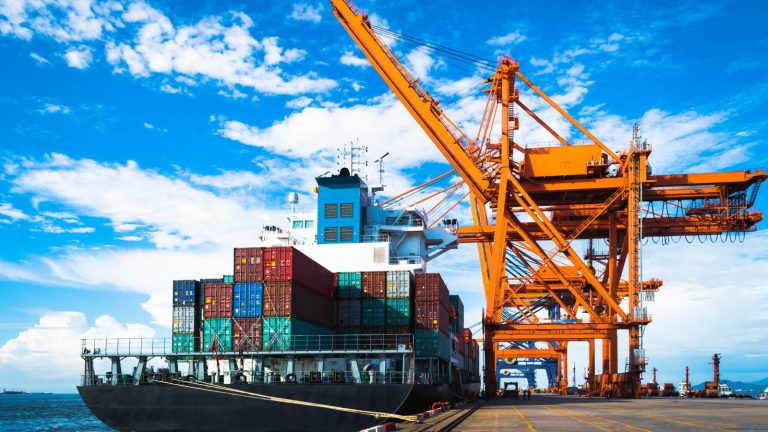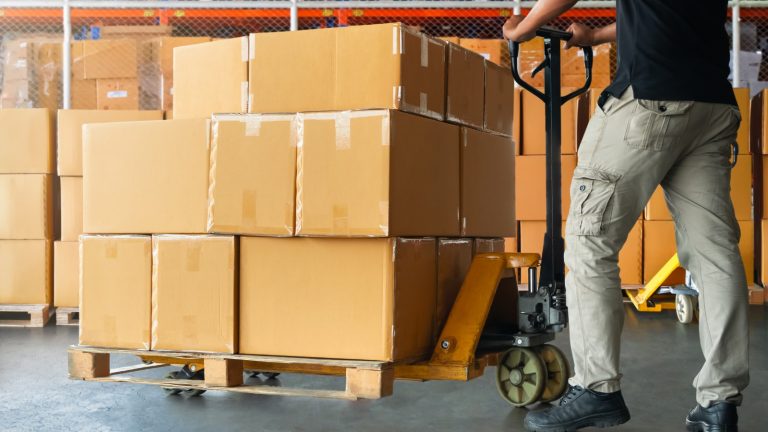The supply chain has become the heart of the manufacturing industry around the globe, and Singapore’s industrial domain is no exception. This is the reason manufacturers look for the latest methods to optimise the capacity of their supply chain in today’s world. However, there are new trends popping up every single day in the scenario of SCM. It is worth having a better understanding of them before planning your supply chain activities ahead.
In this article, we are going to cover the current trends in Singapore. What is SCM in the current scenario? What is the latest technology that is used in SCM? Let us explain everything in our article.
What is Supply Chain Management or SCM?

Supply chain management in manufacturing encompasses the coordination and integration of all processes involved in the production and distribution of goods, from sourcing raw materials to delivering finished products to customers.
SCM includes activities such as procurement, production planning, inventory management, logistics, and customer service.
Effective supply chain management ensures efficient coordination among suppliers, manufacturers, distributors, and retailers, optimising the flow of materials, information, and finances throughout the entire supply chain network. This indicates that if you desire a powerful SCM, then you have to bridge warehousing management, supply channel management, supplier relationship management, and the supply chain workforce all together through one chain.
It is crucial for manufacturing as it enhances operational efficiency, reduces costs, improves product quality, and shortens lead times. This is why manufacturers put a full effort into understanding the latest supply chain trends in Singapore.
It is highly visible that robust supply chain management assists manufacturers in responding quickly to changing market demands, mitigating risks associated with supply chain disruptions, and maintaining competitive advantage in the global marketplace.
The polished knowledge of current trends in supply chain management is worth it when it comes to boosting Singapore supply chain resilience.
Top 6 Latest Trends in Logistics and Supply Chain Management

Advanced Technologies
You know that Singapore is a preferred SCM hub for global companies due to the new strategies they are employing for the diversification of business and supply chains within Asia. As the latest strategy, advanced technologies have swiftly emerged to revolutionise the entire Singaporean supply chain landscape.
What are these emerging supply chain technologies? It seems that the integration of generative AI, data analytics, automation, machine learning, the IoT, and blockchain is reshaping traditional supply chain practices.
These innovations facilitate real-time data analysis, predictive insights, and automation of repetitive tasks, optimising efficiency, accuracy, and responsiveness. Through these technologies, Singaporean supply chains are transitioning towards a ‘smart’ ecosystem that is fully enriched with heightened visibility, agility, and resilience. These digital supply chain trends have brought each aspect of supply chain planning, sourcing, and procurement to logistics management under one canopy.
For example, predictive maintenance enabled by IoT sensors and transparent and secure transactions through advanced technologies like blockchain make SCM a smarter grid. On the other hand, these advancements are propelling the industry towards greater efficiency and sustainability.
Interconnected Data Sets through IoT
Lack of data is the main culprit behind the lack of visibility when it comes to supply chain management. However, the power of IoT has become the latest solution to answer these challenges in an innovative way.
Manufacturers can employ IoT devices, such as sensors and RFID tags, to gather real-time data on inventory levels, shipment conditions, and operational performance.
This interconnectedness paves the way for clear communication and collaboration across the entire supply chain network. It also enhances visibility, transparency, and decision-making. With IoT, Singaporean supply chains can proactively identify bottlenecks, optimise routes, and predict maintenance needs, leading to improved efficiency and cost savings.
What happens when you have this capacity in place is that IoT-driven insights encourage agile responses to dynamic market demands and unforeseen disruptions. This boosts the supply chain resilience at an advanced level.
Talent Development and Skills Enhancement
If the SCM is on point, the workforce that has gathered around it should have a standardised skill set, for sure. This is what Singapore believes when it comes to talent development for SCM.
In order to achieve the best essence of competitiveness, manufacturers have to prioritise investment in training and upskilling initiatives for supply chain professionals. If we look at the Singaporean framework, there is a growing demand for SCM talent.
This includes programmes focusing on areas such as data analytics, digital technologies, sustainability practices, and cross-functional collaboration. They target upscaling skill sets and capabilities of the current workforce.
The good thing about equipping individuals with relevant competencies and knowledge is that Singaporean supply chains can adapt to evolving industry trends very quickly while finding innovative solutions for global supply chain challenges.
Resilience and Risk Management
Considering the increasing complexity and unpredictability of global markets, this has become the latest trend in the supply chain.
With the recognition of potential disruptions ranging from natural disasters to geopolitical tensions and pandemics, supply chain stakeholders in Singapore are actively implementing strategies to enhance resilience.
This includes diversifying sourcing locations, building redundant supplier networks, and investing in technology-driven risk assessment tools, as we mentioned before. Plus, proactive scenario planning and supply chain mapping help organisations identify vulnerabilities and develop contingency plans to mitigate potential disruptions.
If they can prioritise resilience and risk management, Singaporean supply chains can minimise the impact of disruptions and maintain operational continuity for sure. This will lead to upholding customer satisfaction eventually.
Last-Mile Delivery Innovations
What is this ‘last-mile delivery innovation’ concept? It has gained prominence in Singaporean supply chain management as there is a growing demand for fast and efficient delivery services.
Businesses are using cutting-edge technologies like autonomous vehicles, drones, and crowdsourcing delivery platforms because they understand how important the last leg of the delivery process is.
These technologies optimise route planning, shorten delivery times, and provide faster and more affordable delivery solutions. Also, they improve customer satisfaction by offering more ease and flexibility in order processing.
Singaporean supply chains can effectively tackle the issue of urban crowding and meet the growing demands of customers for timely and dependable deliveries by utilising advancements in last-mile delivery.
It seems that this current trend emphasises how crucial it is to use technology-driven solutions in order to optimise logistical processes and maintain competitiveness in the ever-changing world of e-commerce. These types of logistics trends are good ways to stay away from supply chain disruption Singapore.
Sustainability and Green Logistics
Companies in Singapore are increasingly integrating eco-friendly practices into their operations nowadays. This includes the adoption of renewable energy sources, optimisation of transportation routes to reduce carbon emissions, and implementation of sustainable packaging solutions. The overall ecosystem has become a greener supply chain.
On top of that, it is being targeted to reduce the environmental impact of supply chain operations through efforts including waste reduction, recycling programmes, and carbon offsetting schemes.
Through mass efforts to embrace sustainability and green logistics, Singaporean supply chains not only contribute to environmental conservation but also enhance brand reputation. They also attract environmentally conscious consumers and mitigate risks associated with climate change and resource scarcity. This is what a sustainable supply chain is all about, and it is one powerful step towards Singapore’s desire for more resilient and responsive supply chains in the near future!
Cerexio-Powered Resilience Supply Chain Management

Cerexio-powered MES solution is an outstanding answer for all the challenges you encounter in the realm of manufacturing, from production to the supply chain. This will enhance your visibility with the help of Industry 4.0 digital capabilities and boost operational efficiency by 200%. If you desire to achieve a more resilient SCM, Cerexio is your final destination.
Smoothly Adjusting to the New SCM Trends in Singapore

As you can see, it is undoubtedly important to scale up your SCM with the newest trends in the scenario. If you have potent tools for that, it will not be a challenge for you anymore. Implementing one well-planned strategy or trend can lead you to business success.
